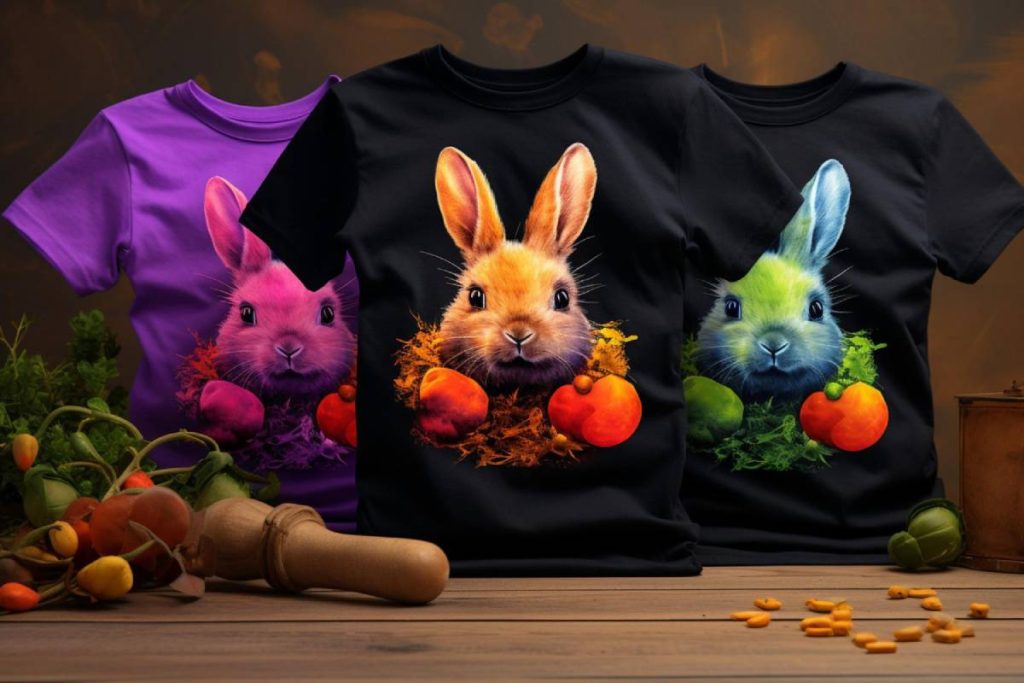DTF printing, or direct-to-film printing, is revolutionizing the world of textile printing with its capacity to deliver high-quality designs on demand. As businesses increasingly turn to custom apparel to meet consumer preferences, DTF printing technology is emerging as a vital player in this dynamic landscape. Innovators and designers are keenly exploring the future of DTF printing, identifying trends that promise to shape its evolution in the years ahead. Moreover, the commitment to sustainable DTF printing practices resonates with eco-conscious consumers, further driving its popularity. In this article, we will delve deeper into how these trends are influencing the industry and what innovations to watch for in 2023.
Direct-to-film printing, often abbreviated as DTF, is quickly establishing itself as a frontrunner within the fabric printing arena. This innovative printing technique empowers creators to showcase vibrant, customized designs across various textiles, capturing the attention of small businesses and major brands alike. As we approach 2023, observers note a shift towards integrating advanced printing technologies with sustainable practices—an intersection that highlights the burgeoning potential of eco-friendly custom apparel solutions. Furthermore, the synergy between DTF and e-commerce platforms is set to reshape how consumers interact with printed clothing, making the experience more seamless and engaging. This article aims to unpack the latest developments and upcoming trends in DTF technology, offering insights into its promising future.
Emerging Trends in DTF Printing for Custom Apparel
As we delve into the future of DTF printing, one of the most prominent trends is its increased application in the custom apparel sector. DTF printing technology enables designers and brands to produce remarkably vibrant and high-quality prints on various fabrics, making it ideal for custom garments. This flexibility not only appeals to a broad spectrum of consumers but also allows brands to showcase their creative visions with intricate designs that stand out.
Moreover, small businesses are particularly favored by the affordability and efficiency of DTF printing. This technology mitigates the financial burden of maintaining large inventories, enabling on-demand production. By embracing custom apparel DTF printing, these businesses can quickly respond to specific consumer needs, enhancing customer engagement and satisfaction through personalized products.
Sustainable Practices in DTF Printing Innovations
Sustainability has become a pivotal concern for industries across the globe, and DTF printing technology is no exception. The paradigm shift towards eco-friendly practices is profoundly shaping the landscape of textile printing. DTF printing processes utilize water-based inks that are significantly more sustainable than their solvent-based counterparts, minimizing harmful environmental impacts. This innovation resonates with a burgeoning demographic of consumers who prioritize sustainable fashion choices.
Furthermore, leveraging sustainable DTF printing methods not only helps the planet but also positions brands competitively in an increasingly conscious market. As more businesses adopt environmentally-friendly processes, those who lead in sustainable DTF practices are likely to attract a loyal customer base committed to making responsible purchase decisions.
Technological Innovations Driving DTF Printing Growth
The realm of DTF printing is experiencing tremendous growth, propelled by continuous technological innovations. The advent of next-generation printers equipped with advanced features such as faster printing speeds and enhanced color reproduction is redefining the standard for quality in the textile printing industry. These improvements allow businesses to increase their production capabilities while maintaining a high level of detail and color accuracy, critical for custom designs.
In addition, advancements in design software are streamlining the operational workflow. These tools provide seamless integration for color management and file handling, allowing designers to translate their creative ideas flawlessly onto various fabrics. By optimizing both the printing equipment and the software involved, the DTF printing process becomes more efficient, which translates to better end-user experiences.
Market Expansion and Future Prospects of DTF Printing
The DTF printing market is poised for significant expansion, driven by rising consumer demand for personalized products. Market studies indicate that brands embracing DTF printing are likely to see increased customer engagement and sales growth, particularly within sectors that prioritize unique and custom designs. As more entrepreneurs and established companies recognize the potential of DTF printing, we can expect to witness a surge in innovative applications and services.
With the continuous advancements in DTF printing technology, businesses are also exploring new revenue models that cater to the changing preferences of modern consumers. As brands adapt their offerings to include more customizable options, DTF printing will play a pivotal role in facilitating creative collaborations and a diverse range of products that resonate with audiences seeking individuality in their fashion choices.
Revolutionizing E-commerce with DTF Printing Solutions
The integration of DTF printing with e-commerce platforms has revolutionized the way businesses operate in the custom apparel sphere. With DTF technology, brands can seamlessly connect online interfaces that allow customers to design and order custom prints, speeding up the production-to-delivery process. This enhanced efficiency not only boosts customer satisfaction but also streamlines inventory management, making it easier for brands to maintain a dynamic and responsive marketplace.
In this shifting retail landscape, the ability to offer a straightforward online shopping experience combined with unique DTF printed products can set brands apart from their competitors. This alignment of DTF printing capabilities with e-commerce strategies enables greater market reach while capitalizing on the growing trend of online shopping, ultimately creating a win-win scenario for both businesses and consumers.
The Future is Now: Embracing DTF Printing Innovations
As the textile industry faces increasing demands for innovation and sustainability, DTF printing emerges as not just a temporary trend but a transformative solution for the future. Businesses that stay ahead of the curve by embracing DTF technologies will not only enhance their product offerings but also solidify their positions in their respective markets. By using DTF printing practices, brands can convey their commitment to quality and sustainability, appealing to a broader audience.
In conclusion, the innovations and trends surrounding DTF printing represent a pivotal moment for the industry. With a dedicated focus on technological advancements, sustainable practices, and seamless integration with e-commerce, the future of DTF printing appears remarkably bright, promising endless opportunities for creatives and entrepreneurs eager to reshape the textile landscape.
Frequently Asked Questions
What are the main trends shaping the future of DTF printing?
The future of DTF printing is characterized by increased adoption in custom apparel, a focus on sustainability, technological advancements, significant market growth, and integration with e-commerce. These trends indicate a shift towards more accessible, eco-friendly, and high-quality printing solutions that cater to consumer demand.
How is DTF printing technology impacting the custom apparel industry?
DTF printing technology is revolutionizing the custom apparel industry by enabling businesses to produce vibrant, intricate designs on demand. This flexibility allows for reduced inventory costs and faster fulfillment times, empowering small businesses to efficiently meet consumer trends and personalized requests.
What sustainable practices are associated with DTF printing?
Sustainable DTF printing involves using water-based inks and minimizing waste and energy consumption. These eco-friendly practices attract environmentally conscious brands and consumers who prioritize sustainable fashion solutions, thus positioning DTF printing as a responsible choice in the industry.
What technological advancements are enhancing DTF printing capabilities?
Recent advancements in DTF printing technology include faster printer speeds, enhanced color accuracy, and user-friendly interfaces. Innovations such as automated cleaning systems and improved design software contribute to higher productivity and superior print quality, elevating the overall user experience.
What is the projected market growth for DTF printing?
The projected market growth for DTF printing indicates a flourishing future, driven by an increasing demand for customized, high-quality graphics. As more brands adopt DTF technology, the industry is expected to expand significantly, providing new opportunities for creativity and innovative textile solutions.
How does DTF printing integrate with e-commerce platforms?
DTF printing integrates seamlessly with e-commerce platforms, allowing brands to offer custom designs that can be quickly printed and shipped. This integration enhances the customer experience by providing a streamlined online ordering process, ultimately driving sales and expanding market reach.
| Key Point | Description |
|---|---|
| Increased Adoption in Custom Apparel | Surge in DTF printing for vibrant, intricate designs in custom merchandise especially by small businesses. |
| Sustainability Focus | DTF printing minimizes waste and energy consumption, appealing to eco-conscious brands with eco-friendly inks. |
| Technological Advancements | Faster printing, enhanced color accuracy, and improved user interfaces are driving productivity and satisfaction. |
| Market Growth | Increasing demand for customized products is projected to expand the DTF printing market significantly. |
| Integration with E-commerce | DTF technology streamlines online ordering and enhances customer experience, driving sales growth. |
Summary
DTF printing is rapidly transforming the landscape of textile printing with its innovative approach and numerous advantages. As businesses embrace the trend of DTF printing, its integration into custom apparel, prioritization of sustainability, and the impact of technological advancements are paving the way for a more efficient and creative industry. The ongoing growth of the DTF printing market illustrates its role as a driving force in the future of textile printing, making it essential for businesses to stay ahead of the curve in adopting this dynamic technology.



